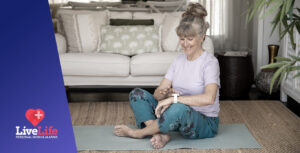
How To Prevent Falls in Seniors: A Guide to Staying on Your Feet
Falls among seniors are a significant health risk. According to the Australian Institute of Health & Wellness, falls were the leading cause of injury hospitalisations in 2022–23 and the leading cause of injury deaths in 2021–22. This alarming statistic highlights the urgency of addressing this issue. Falls often lead to serious injuries, such as fractures and head trauma, and can result in a loss of independence and a profound fear of falling again. This guide provides practical strategies to help seniors reduce their fall risk and maintain their mobility.
Assessing Fall Risks
Identifying Personal Risk Factors
Understanding personal risk factors is crucial in preventing falls. Common issues include:
- Age: As we age, our body systems change, increasing fall risk.
- Medical Conditions: Conditions like arthritis can limit movement, while diabetes may cause dizziness.
- Medication Side Effects: Some medications can cause drowsiness or affect balance.
- Vision Problems: Issues like cataracts or glaucoma can impair sight.
- Balance Issues: Weakness or instability when standing can make falls more likely.
Consider a comprehensive assessment with a healthcare provider. They can help identify these risks and suggest tailored strategies.
Home Safety Evaluation
Home environments often contain hazards that increase fall risk. Common dangers include:
- Throw Rugs: These can easily be tripped over.
- Uneven Flooring: Changes in floor height can lead to missteps.
- Poor Lighting: Dimly lit areas make it hard to see obstacles.
To enhance safety at home, consider modifications like:
- Grab Bars: Install in bathrooms and hallways.
- Ramps: Replace steps with ramps for easier access.
- Improved Lighting: Use bright bulbs and night lights.
Medication Review
Regular reviews of medications with a doctor or pharmacist are vital. Some medications known to increase fall risk include:
- Anti-anxiety medications.
- Certain blood pressure medications.
- Diuretics.
A medication review can help adjust dosages or find safer alternatives
Improving Balance and Strength
Exercise Programs
Regular exercise can significantly enhance balance and strength. Recommended activities include:
- Tai Chi: This gentle art improves balance and flexibility.
- Yoga: Great for strength and posture.
- Strength Training: Focus on leg and core strength.
Find resources that offer senior-friendly exercise programs. Many local community centres or gyms provide classes tailored for older adults.
Physical Therapy
Consulting a physical therapist can be beneficial. They can create a personalised plan to improve balance, gait, and strength. Look for therapists who specialise in geriatric care for the best results.
Assistive Devices
Using assistive devices like canes or walkers can boost stability and confidence. When choosing devices, consider:
- Proper Fit: Ensure it’s the right height.
- Quality: Choose durable and reliable options.
- Personal Medical Alarms: Great for after a fall has occurred.
Understanding how to use these devices correctly can further enhance safety.

Vision and Hearing Considerations
Vision Impairment
Vision plays a critical role in fall prevention. Problems like blurred vision can lead to accidents. Regular eye exams are essential. Also, improving lighting in living spaces and using corrective lenses can help.
Hearing Loss
Hearing loss can impact a person’s ability to perceive their surroundings. This increases the risk of falls as important sounds may go unnoticed. Regular hearing check-ups and the use of hearing aids can make a significant difference.
Footwear and Clothing Choices
Appropriate Footwear
Footwear choices greatly influence stability. Opt for:
- Sensible Shoes: Look for shoes with good support and non-slip soles.
- Proper Fit: Ensure shoes fit well to avoid blisters or trip hazards.
Avoid wearing slippers or high heels, as these can increase fall risk.
Clothing Selection
Comfortable, well-fitting clothing is essential. Loose or long clothing can become a tripping hazard. Choose outfits that allow easy movement and do not get in the way.
Maintaining a Healthy Lifestyle
Nutrition and Hydration
A balanced diet is vital for maintaining strength and bone health. Focus on:
- Calcium: Essential for bone strength.
- Vitamin D: Supports calcium absorption.
- Hydration: Staying hydrated improves overall health.
Following dietary guidelines tailored for seniors can help maintain energy levels and reduce fall risk.
Sleep and Stress Management
Lack of sleep and high stress can contribute to falls. Prioritising rest and managing stress levels are crucial. Techniques like mindfulness, meditation, or gentle yoga can help improve sleep quality and overall well-being.
Conclusion
Preventing falls requires a multifaceted approach. By assessing personal risk factors, improving home safety, enhancing balance, and prioritising health, seniors can significantly reduce their risk. Taking proactive steps fosters independence and promotes a higher quality of life. Seek professional guidance to create a tailored fall-prevention plan and in case all else fails, consider a personal medical alarm with inbuilt fall detection. Stay safe and keep moving!













